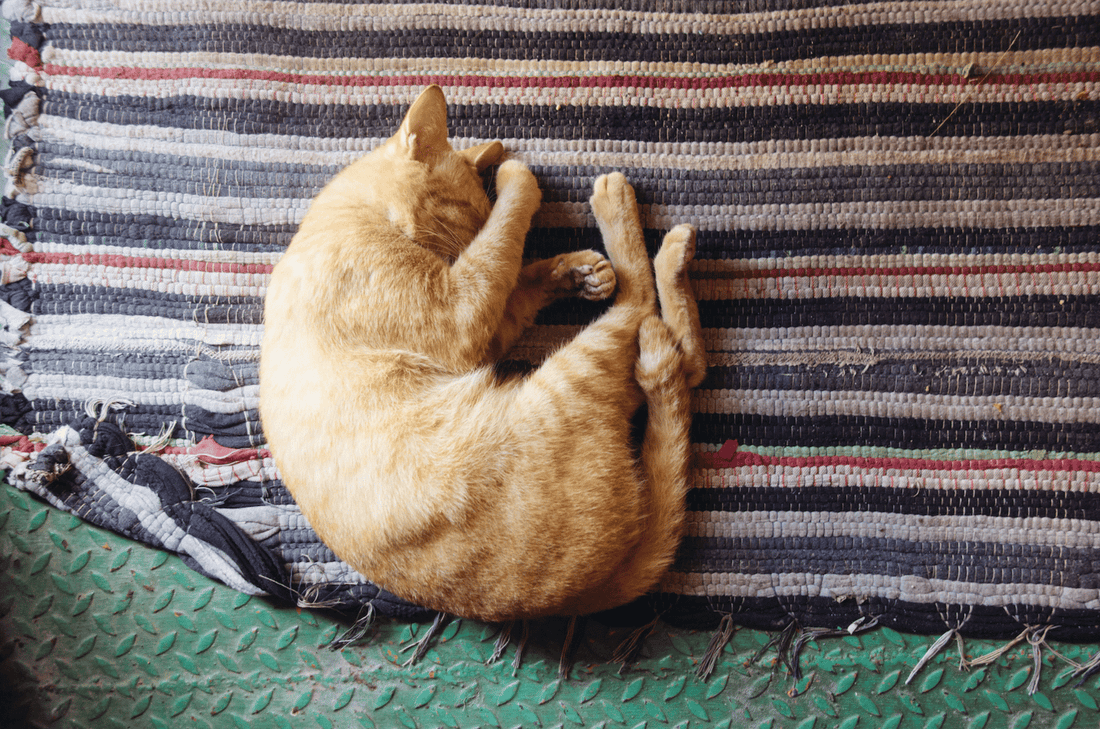
Is Napping Good for You?
A nice afternoon snooze will refresh you with a boost of motivation that will help you finish your day strong. Naps can stimulate cognitive function, including memory, and energize your mood and performance.
Or will they? Are naps really good for you? TL;DR: It all comes down to executing the right nap strategy. Without it, a nap can lead to feeling groggy for the rest of the day and can make you restless when the time comes to catch some deep Zs at night.A Healthy Nap
Taking the right approach to napping can give you energy to power through the rest of your day without those heavy eyelids holding you back. Many may wonder, though, how much sleep do you actually need? Most people aren’t actually getting enough substantial sleep nor the recommended nightly amount. 34% of adults admit to napping during the day.Ideally, an adult should nap for only about 15 to 30 minutes, or just enough to reach light levels of sleep.Any longer and you will likely disrupt your natural sleep cycle – the circadian rhythm – which regulates your schedule to help you feel tired when nighttime falls. A long nap, particularly over one hour, has more potential for entering deep sleep stages, which are far more difficult to wake from.
 Have you ever woken up in the morning from your alarm and felt that tired, foggy feeling? Do you feel like maybe you didn't even sleep at all? Yep, that's called sleep inertia. Chances are you were woken up straight out of deep sleep. Then the sleep inertia, or lagging brain takes over, making it much harder to kickstart your day with energy or motivation.
Awakening from deep sleep is somewhat unnatural for the mind and body. Likewise, it is far easier to wake up from a nap while only lightly sleeping, which is why duration matters so much. Napping may be a little more complicated than most have envisioned, but with proper napping strategies, achieving a cozy afternoon catnap can provide benefits to your daily wellness.
Have you ever woken up in the morning from your alarm and felt that tired, foggy feeling? Do you feel like maybe you didn't even sleep at all? Yep, that's called sleep inertia. Chances are you were woken up straight out of deep sleep. Then the sleep inertia, or lagging brain takes over, making it much harder to kickstart your day with energy or motivation.
Awakening from deep sleep is somewhat unnatural for the mind and body. Likewise, it is far easier to wake up from a nap while only lightly sleeping, which is why duration matters so much. Napping may be a little more complicated than most have envisioned, but with proper napping strategies, achieving a cozy afternoon catnap can provide benefits to your daily wellness.
Tips for Better Napping
- Nap length: Ideally, a nap should last for 15 to 30 minutes so that you only reach a light sleep level. Napping for a maximum of one hour is recommended in order to lower your chance of waking up feeling even more tired or disrupting your natural sleep schedule.
- Nap timing: Don’t nap too early or too late in the day to successfully "re-fill your tank" and defeat daytime drowsiness. According to experts, napping about eight or more hours before bedtime is best. For most, an ideal time would be before 3:00 p.m.
- Nap location: Choose a neutral place that is neither too hot nor cold for your preference. Unquestionably, where you take a snooze should be quiet and preferably dark as well. To achieve an elevated nap cycle that will actually help you to feel better, your "nap cave" should be free from disruptions like electronics or people.
Adult Versus Children's Naps
While they both can benefit from an afternoon nap, the benefits of a nap for adults versus children are very different. Adults typically take naps to counteract daytime fatigue. Children need naps for growth and brain development. Like adults, napping can also be beneficial to prevent a child from becoming overtired and cranky, even exhausted. A naptime routine is essential in a child's life to add structure and provide essential downtime that allows for physical and mental growth. Plus, it keeps them (and you) in a better mood.Downsides of Napping
Drawbacks of napping include the disruption of your regular sleep cycle and circadian rhythm. Naturally, we experience a "dip" in our circadian rhythm that makes us feel tired about halfway through the day. This is because of an innately occurring melatonin release. Also known as the "post-lunch dip," a slight feeling of tiredness is perfectly healthy and expected in the revolution of a healthy human's day. Napping just before or during the dip, before it gets too late in the day, will help you avoid disrupting your natural sleep cycle at night. Sleep inertia is another common occurrence from unsuccessful napping strategies. This is the feeling of waking up foggy and not being able to think straight. This is often caused by sleeping too long during a nap and awakening directly from a deep sleep. That fogginess and weary feeling caused by sleep inertia.When Napping Becomes a Concern
A staggering 50 to 70 million Americans currently have ongoing or chronic sleep issues that napping just simply isn't going to fix. If you are regularly struggling to find the energy to get through your day, falling asleep often, or otherwise needing to sleep just to simply stay awake, your sleep deprivation may begin to cause unwanted health issues. Sleep is a crucial pillar in the foundation of our overall wellness, along with diet, appropriate hydration, and exercise. Without these health pillars being well-balanced, many find themselves in a world of hurt from the lack of REM (Rapid Eye Movement) and deep sleep.Needing naps often, napping too long, or napping too late in the day can increase your sleep debt and deprivation, making it even more difficult for you to get back on track.If overnapping takes place during the day, you are less likely at night to achieve levels of deep and restorative REM sleep. Deep REM sleep can help you restore or retain memories while the body also recovers from your day. Other prime benefits of deep sleep include:
- Refined perceptual motor skills (such as hand-eye coordination)
- Rejuvenated memory formation
- Regulated emotions to help ease stress or impulsive behavior
- Improved learning abilities and cognitive function
- Endorphin, nutrient and hormone distribution
- Fragmented sleep: Frequent or excessive awakenings during your normal sleep-to-wake cycle. This causes headaches, feeling sleepy during the day, lapses in memory, concentration issues, and fatigue.
- Excessive Daytime Sleepiness (EDS): Feeling overcome by an irrepressible sensation to sleep while you should be awake. You may feel tired all the time.
- Narcolepsy: Falling asleep at random times, unexpectedly, even mid-conversation. Any person diagnosed with narcolepsy has EDS and will experience the symptoms that make it hard to stay alert during the day.
- Insomnia: Trouble falling and staying asleep. According to the CDC, 50% of Americans experience the symptoms of short term-insomnia, while 10% will progress to long-lasting insomnia that is also linked to high blood pressure and cardiovascular disease.
- Diabetes
- Lowered immunity
- Cardiovascular problems
- High blood pressure
- Depression
- Obesity or weight gain
- Don't sleep too long. Set an alarm (15 to 20 minutes is best but limit yourself to one hour maximum).
- Take a nap at least 8 hours before your bedtime.
- Choose a quiet area. If quiet is not an option, try a white noise machine or vibration massage mattress base that can act as white noise to limit distractions.
- Ear plugs are also an easy way to disconnect and prohibit noise that could potentially wake you up during a nap.
- Choose a darker room and turn off the lights. Blackout curtains work well to keep out window light.
- Block unwanted light with an eye mask.
Types of Naps
 Different types of naps may be more fitting for some than others. These nap styles are more tools for you to potentially add to your strategy:
Different types of naps may be more fitting for some than others. These nap styles are more tools for you to potentially add to your strategy:
- Power nap: Generally short, 10 to 20 minutes in length. Boosts energy and "power through the day."
- Recovery nap: Meant to help decrease "sleep debt" or compensate for lost sleep during the prior night(s).
- Proactive nap: Possibly the most interesting of its kind. If you are anticipating little sleep that night due to travel or an overnight activity, a proactive nap will add to your "sleep savings bank" and give your body rest when there is little opportunity to sleep later.
- Coffee nap: This one may come with some skepticism. You could wake up feeling more alert and refreshed than ever after consuming a reasonable amount of caffeine before your nap. Because caffeine takes 30 minutes to kick in, the theory is that it will help you wake up feeling rejuvenated from sleep but with a bigger boost of energy!

